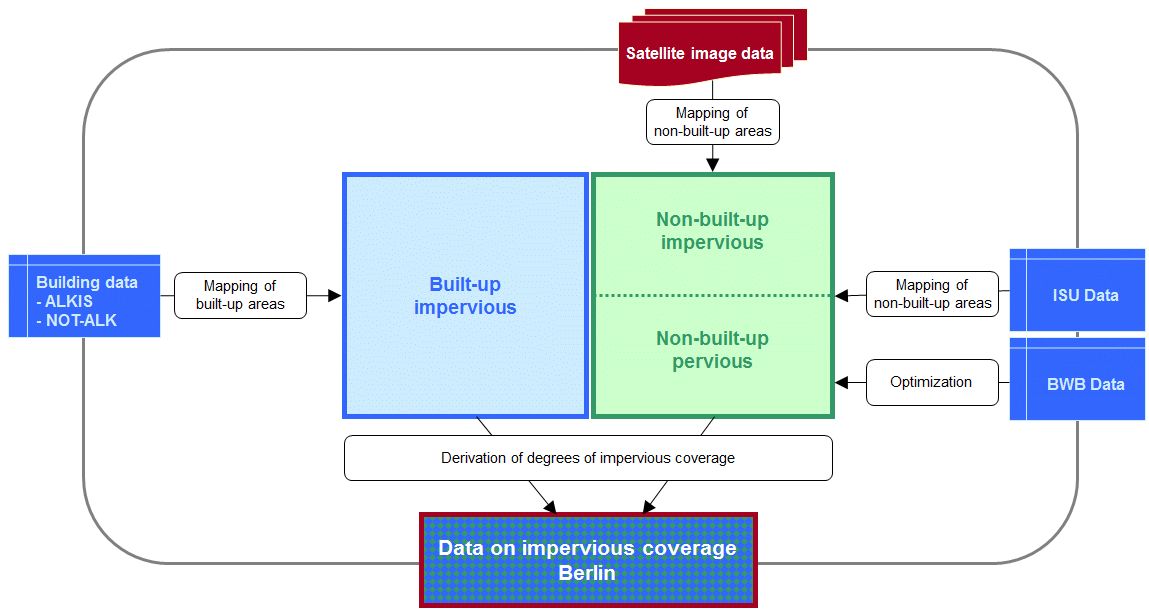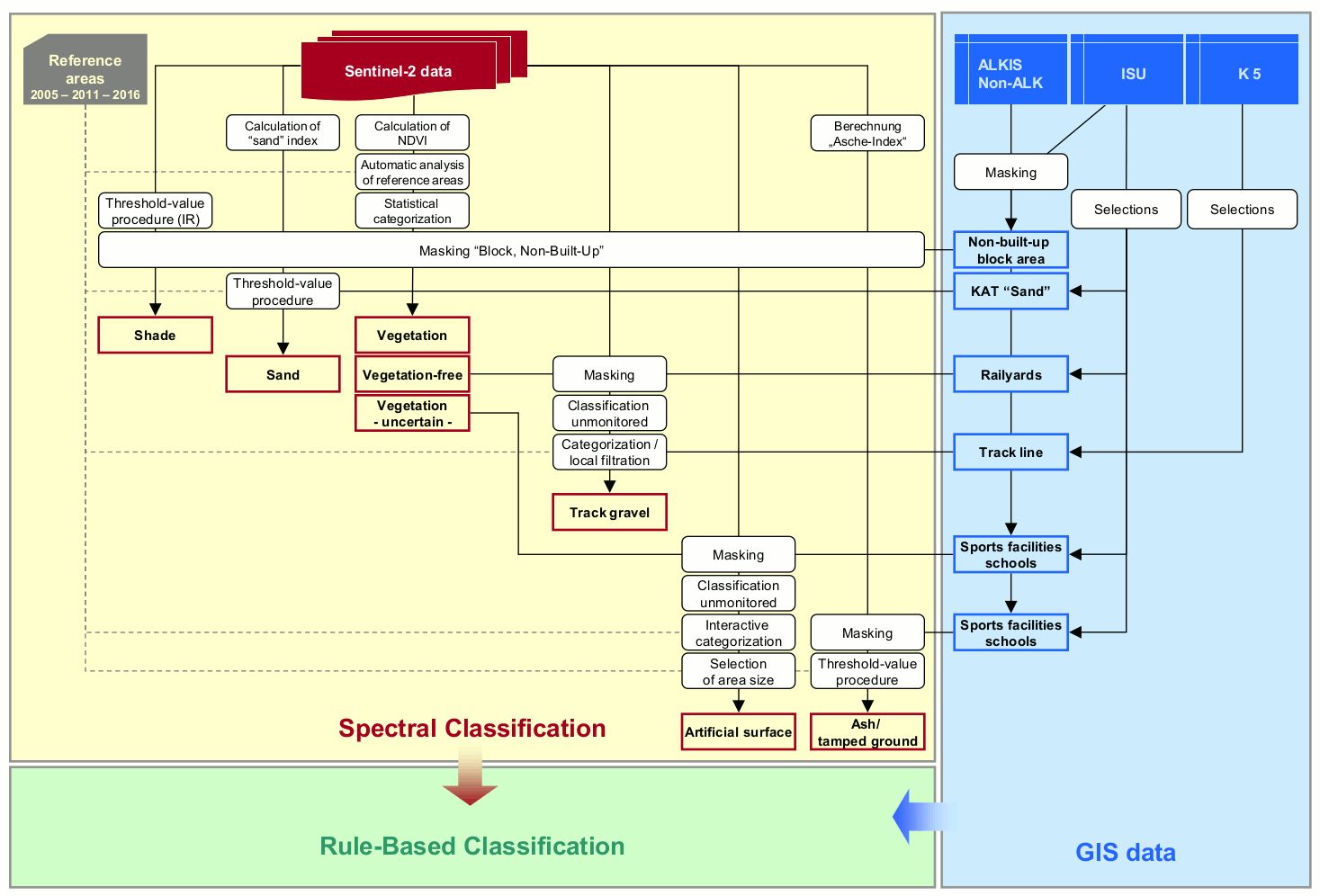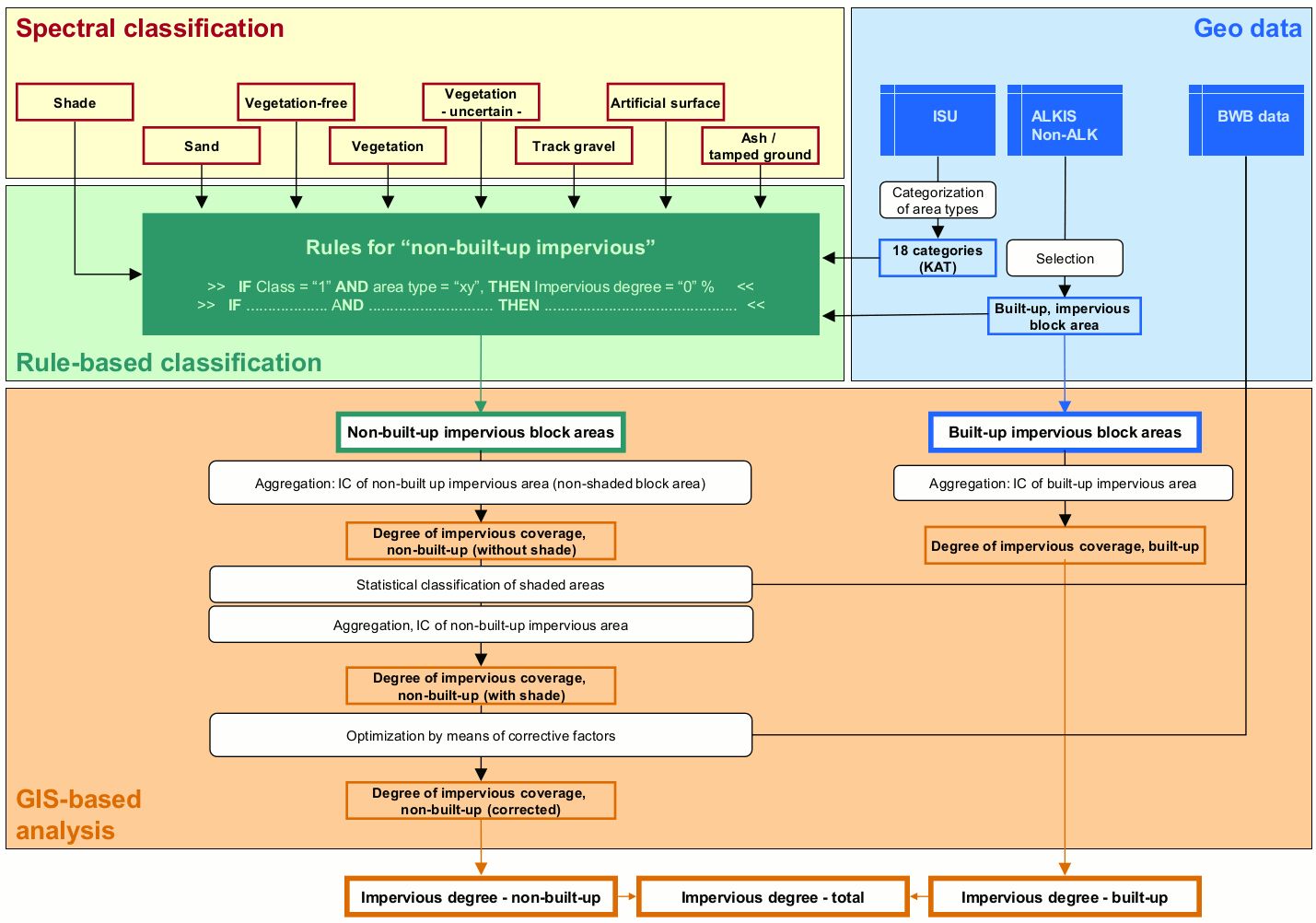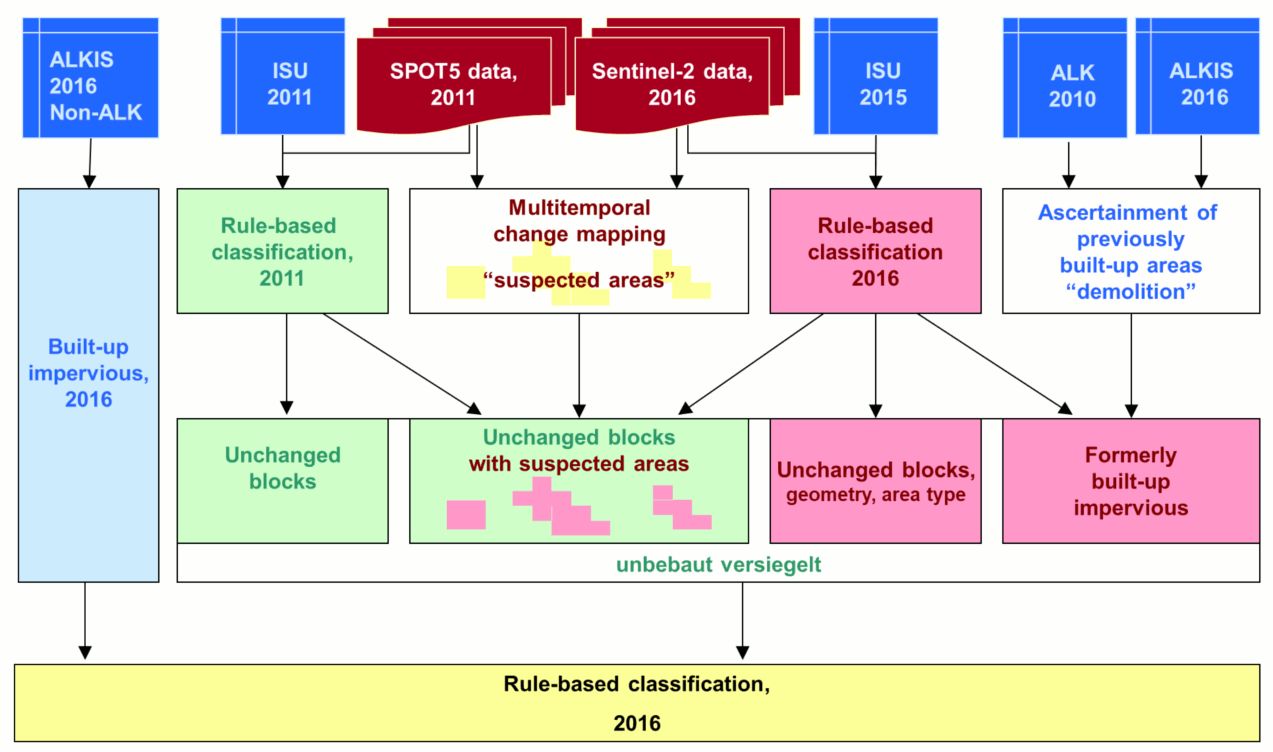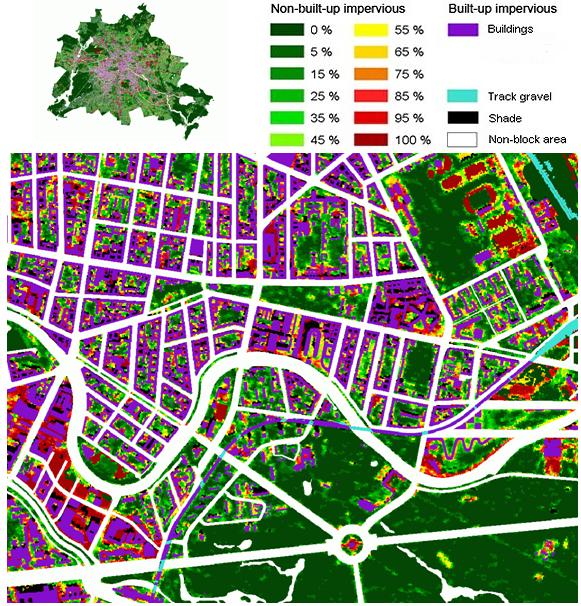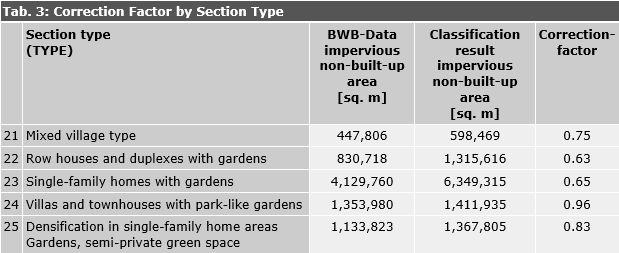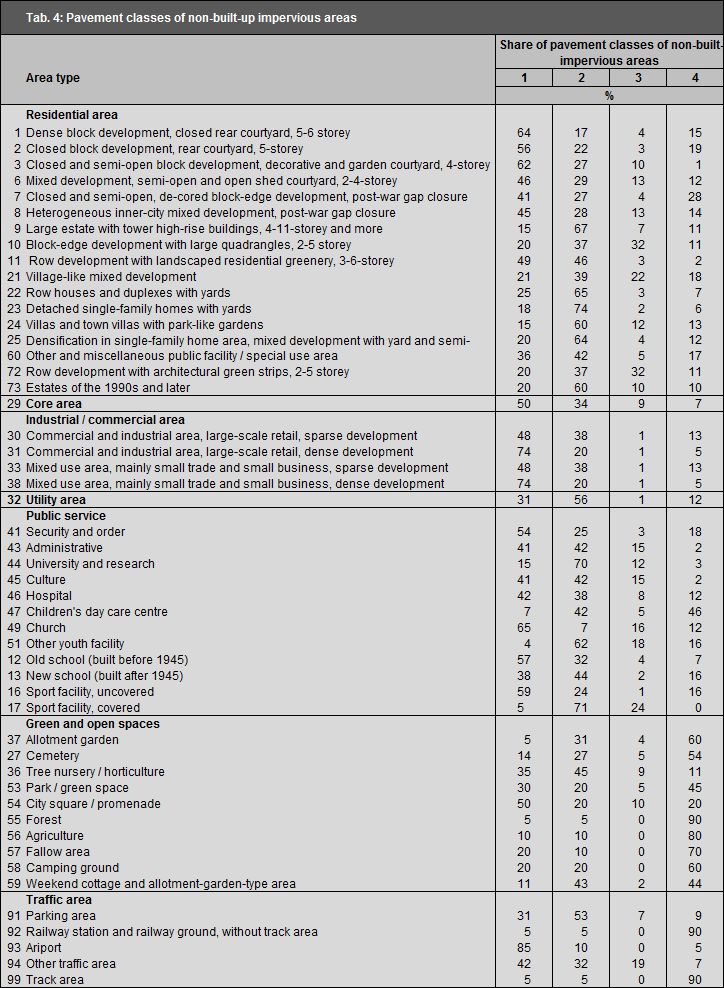The intermediate result published in the FIS Broker as the 2016 “Impervious Coverage Map (uncorrected degrees of impervious coverage, grid data)” shows the distribution of impervious coverage within the blocks and block segments. The effect of shade in the various blocks can also be seen. However, it is both a grid map as well as an uncorrected intermediate result of the impervious coverage mapping, i.e. a satellite data result based on a rule-based classification. At the grid level of 2.5m x 2.5m, twelve impervious coverage-degree classes are displayed for the non-built-up area. Furthermore, the buildings are mapped based on various building data, i.e. built-up impervious areas, as well as track gravel and shaded areas. The
grid level information was aggregated for the impervious coverage map of the Environmental Atlas at block area level and further processed and corrected in parts. The black shaded areas present here were assigned a degree of impervious coverage, e.g. based on their surroundings and their area types (see below).
The Map “Impervious Soil Coverage” (01.02) by contrast, shows the mean degree of impervious coverage per block area.
Calculation of Degrees of Impervious Coverage at Block and Block Segment Level
The goal of the impervious-coverage mapping process is the derivation of the degrees of impervious coverage at block and block segment level in absolute and relative area numbers. Three degrees of impervious coverage (IC) were distinguished:
- IC – built-up impervious area (calculated from building data),
- IC – non-built-up impervious area (calculated from satellite data),
- IC – total (sum of 1 and 2).
For the calculations, the results of the pixel-based satellite-image classification were collated with the areas from the ISU5 block map 2015.
First, a summation by category of degree of impervious coverage and block (segment) area was carried out. Thus, the grid data of the classification system was no longer necessary for further analyses.
There were thus 15 area-referenced statements in sq. m. for each block and block segment:
- Built-up area (from building data)
- 12 categories of degrees of impervious coverage of the non-built-up area (corresponding to NDVI categories)
- Track-gravel areas (optionally either 0 % or 100 % impervious), and
- Shaded area (unclassified).
For the further improvement in the mapping results, the following additional calculations were carried out.
Optional Assignment of an Impervious-Coverage Value to Track-Gravel Areas
The class “Track gravel” has been maintained as a data field of its own, and can optionally be included in the calculations either as an impervious non-built-up (100 %) or pervious built-up area (0 %). This ensures the different evaluation of gravel according to the subject matter at hand. In the map shown, track gravel is considered 100 % impervious.
Classification of Shaded Areas
Shaded areas have been assigned impervious-coverage values at block level in a follow-up classification procedure at block (segment) area level using ISU or BWB data.
For this, the shaded areas were analyzed depending on area type. For area types with predominantly residential use and adequate BWB data, the latter was used for the classification of the shaded areas. For all other area types, shaded areas were classified in accordance with their block-specific surroundings.
Evaluation of Built-Up and Non-Built-Up Impervious Areas in the Category “Allotment Garden”
Due to the improved data base for buildings, it was possible to record the built-up impervious area share more accurately than was the case still for the 2005 and 2011 mappings. However, as there are still gaps in the building data, especially in this category, e.g. due to unmapped cottages and sheds, shares of the non-built-up impervious area were also counted as part of the built-up area in the current impervious coverage mapping, based on the mean values laid down in the Bundeskleingartengesetz (Federal Allotment Garden Law) and those specific to Berlin (SenStadtUm, I C 2009). A degree of impervious coverage for built-up areas of 9.6 % for West Berlin and 8.6 % for East Berlin was assumed.
Application of Corrective Factors
To further improve the mapping results, so-called corrective factors were employed. The BWB data on impervious soil coverage was used for this purpose. The principle of area-type-referenced corrections is based on the following well-founded assumptions:
- the BWB data was still largely up-to-date at the time corrective factors were developed,
- the BWB data was adequately precise, due to the ascertainment methods (terrestrial inspection, aerial-image interpretation, building-owner information),
- the one-time calculation of corrective factors makes them transferable to future evaluations, since they describe systematic trends in a city-wide comparison.
Due to a lack of topicality, overlap problems, differing definitions of impervious coverage, and gaps in impervious coverage ascertainment of some use types by the BWB, corrective factors could be calculated only for 5 area types (cf. Table 3).
Corrective factors were only applied to non-built-up areas.

